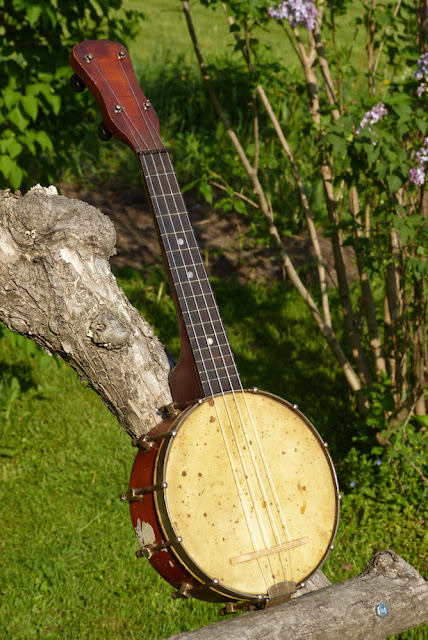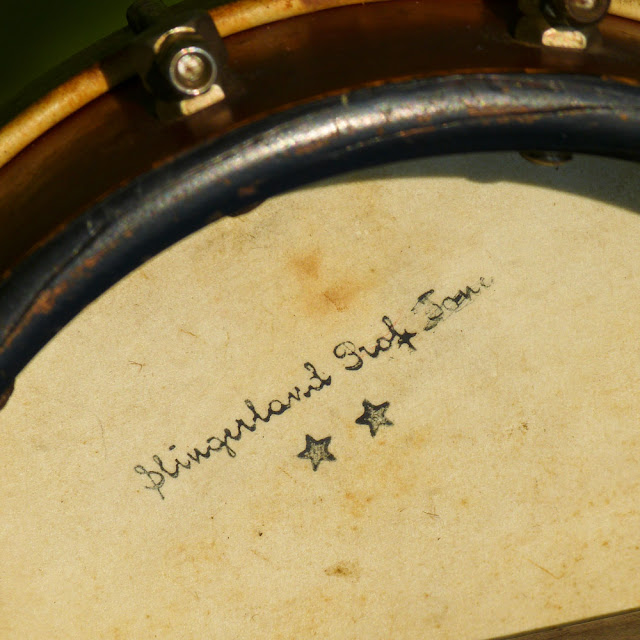1920s Slingerland "Victory" Soprano Banjo Ukulele
While this is branded "Victory" on the dowel, it's a variant on the typical Slingerland-sold 7" openback banjo uke and has the longer, slightly more common 14" scale that -- now that I've seen enough of them -- doesn't seem to indicate anything about the age, though it's likely a late-20s/early-30s product. I'm not sure who made these instruments but I have Regal-oriented suspicions.
This is a customer's uke (one of two of his banjo ukes) that I "did up" today -- a fret level/dress, much cleaning (though it doesn't look like it), replacement tuner parts, a replacement bridge, and general setup were the efforts involved. It's now playing just as it should and is strung with a set of fluorocarbon strings.
The head is awfully grimy (though now wiped-down) -- and how do you like that artfully-placed bit of white paint from the garage?
Maple, as usual, is used for the neck and rim and this one has a separate dyed-maple fretboard which is slightly unusual (most of these had the frets set directly in the neck).
I sometimes wonder if the switch from 13" scale (on some Slingerland jo-ukes) to 14" was to place the bridge closer to the edge of the rim -- where slackness (in summer humidity, for example) of the head would be less evident in the setup.
I've used an all-maple NOS Harmony tenor banjo bridge, cut-down, for this. I prefer all-maple bridges on jo-ukes most of the time (but not all of the time).
This is my favorite tailpiece design for openbacks -- it accepts loop, ball-end, and anything-end strings quite easily.
I replaced one of the buttons (it was missing) and added some extra washers below the buttons to keep them turning nicer than they otherwise would.
Originally the neck brace was a simple shim that knocked into the dowel. Considering the level of comfort most owners have with setting-up and maintaining their instruments, I've been "converting" this to a simple bolted-on (see my drywall screw and finishing washer) approach for lower-priced instruments.
This means that, aside from head slackening, the setup that I sent it out with should be preserved (more or less) over the years and it won't be "fussy" for the user.














Comments